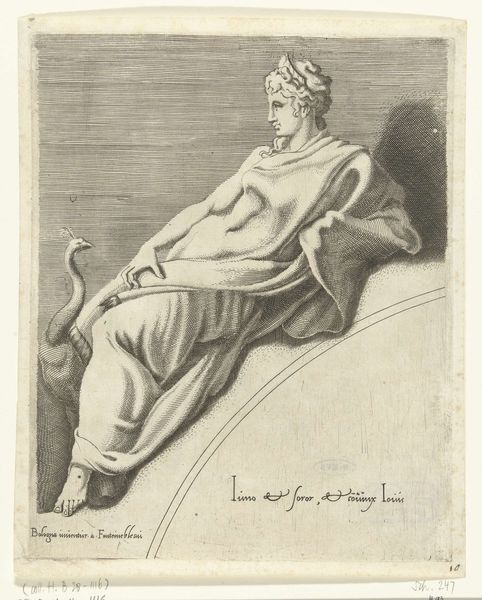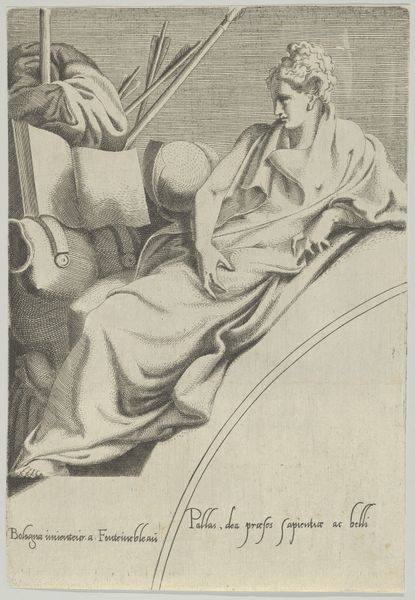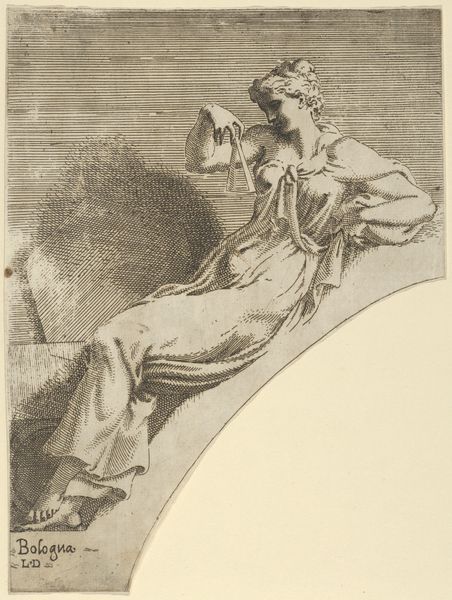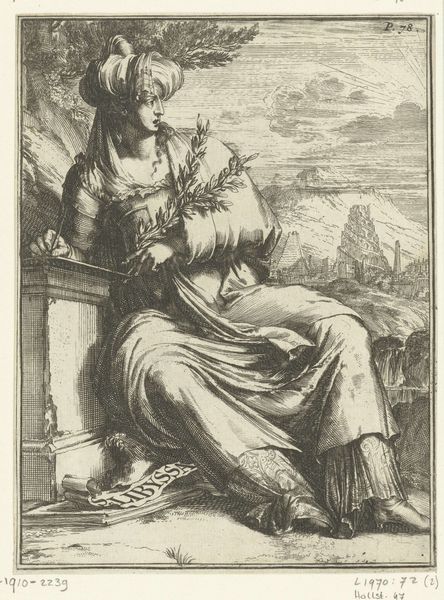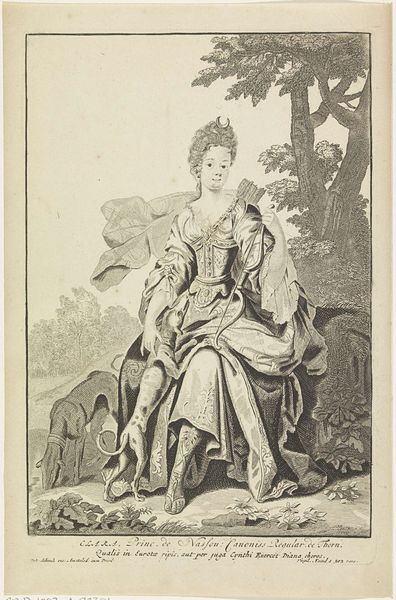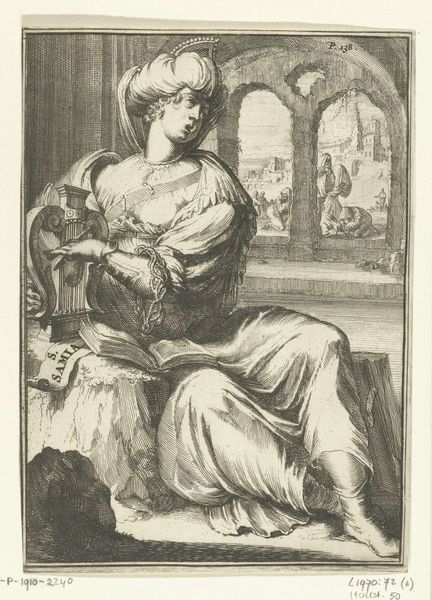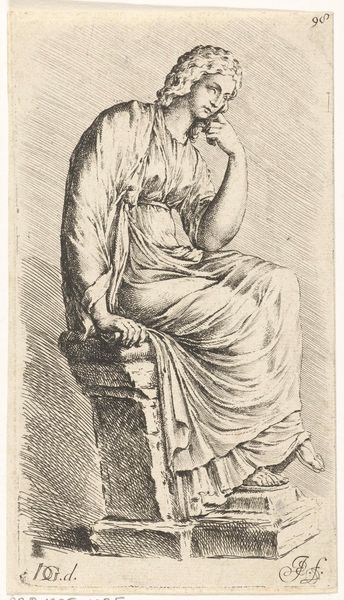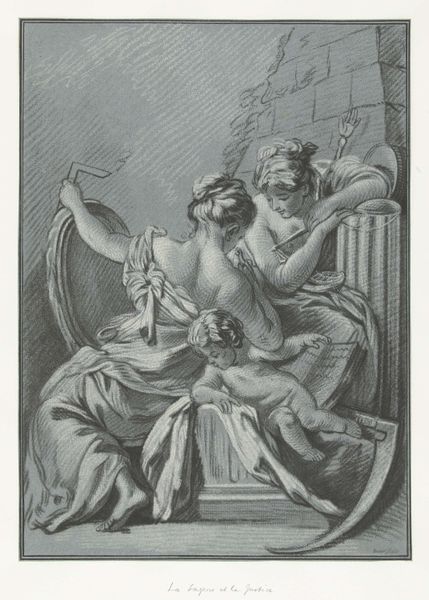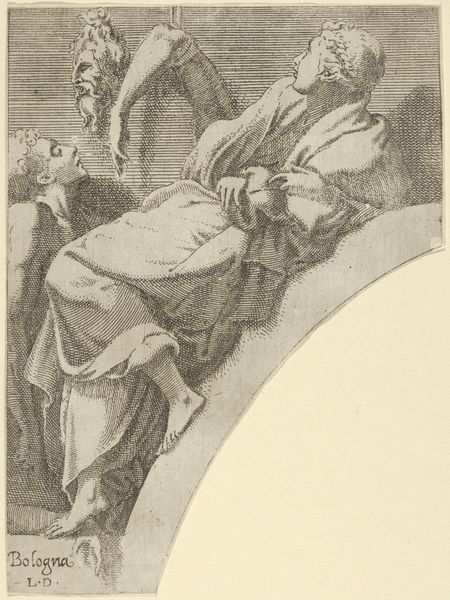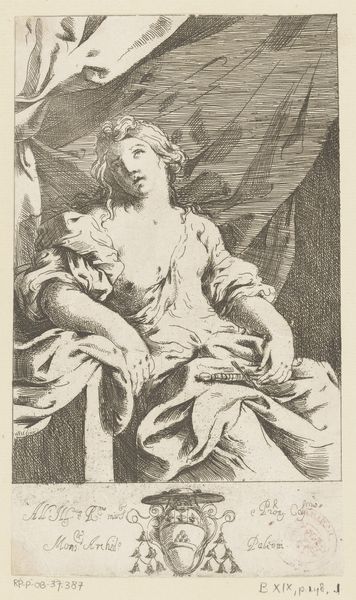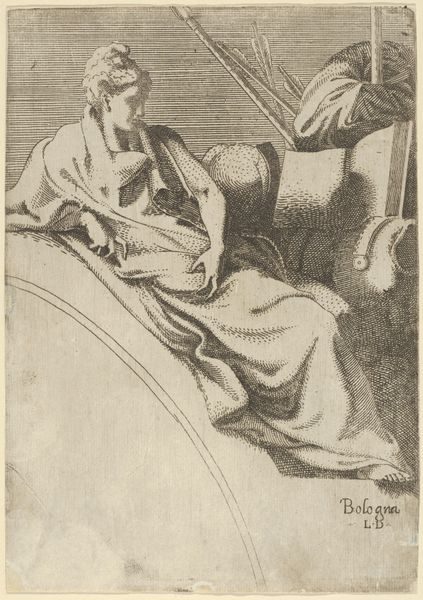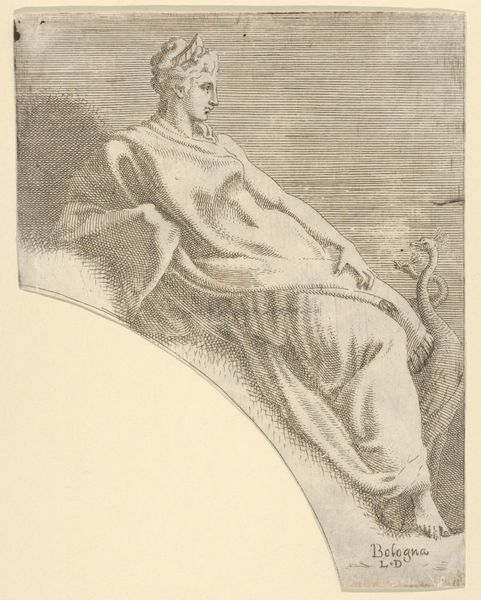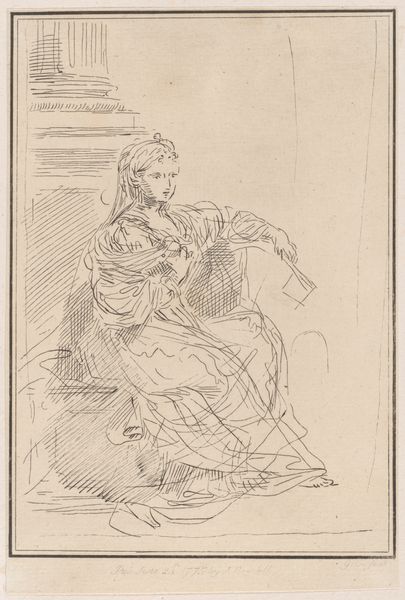
print, engraving
#
pencil drawn
# print
#
pencil sketch
#
mannerism
#
figuration
#
11_renaissance
#
pencil drawing
#
history-painting
#
engraving
Dimensions: height 226 mm, width 170 mm
Copyright: Rijks Museum: Open Domain
Editor: This is "Erato," an engraving by Cornelis Bos, dating from around 1540 to 1555. The muse appears relaxed, almost melancholic. I’m curious about the geometric figure beside her. What’s your take on this piece? Curator: "Erato" offers a glimpse into the complex relationship between art, knowledge, and power in the Renaissance. Bos situates the muse within a specific intellectual context. How do you read Erato's positioning relative to the geometric solid and sphere she’s leaning on? Editor: It's interesting to see her interacting with geometry rather than just holding a lyre. Does it suggest a link between artistic inspiration and rational thought? Curator: Absolutely! This challenges conventional ideas about creativity. The print speaks to the Renaissance humanist project. The muse is grounded in mathematics and philosophy, tools of empire-building and trade expansion that heavily involved the exploitation of women, the poor, and people of colour. Does this added understanding alter your initial feeling of melancholy, perhaps complicating it with elements of unease? Editor: It does. The muse isn't just a figure of inspiration; she represents how knowledge, even in the arts, can be intertwined with power structures. Is the solid geometry referencing exploitation too, or just an idealized mathematical model? Curator: I think both are represented. How do we navigate beauty when its creation or appreciation occurred amid social and political struggles? Editor: It certainly changes the way I'll look at Renaissance art. Thanks, I am always learning how complicated these things can be. Curator: Likewise, every artwork, especially one embedded within systems of patronage, offers an opportunity to examine underlying political dimensions and their influence on how we perceive and interpret art today.
Comments
No comments
Be the first to comment and join the conversation on the ultimate creative platform.

